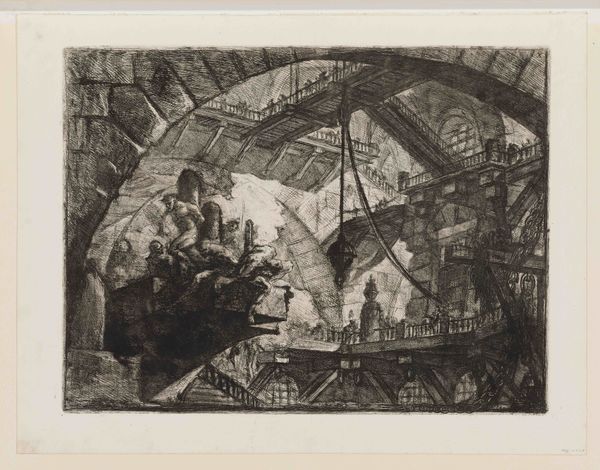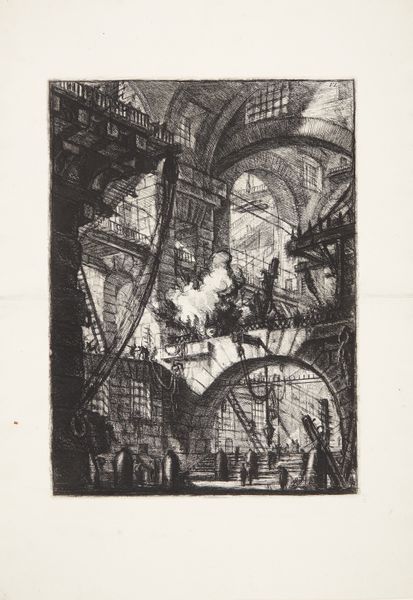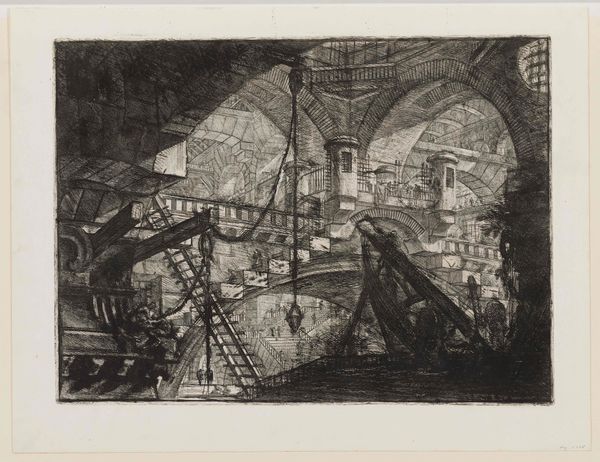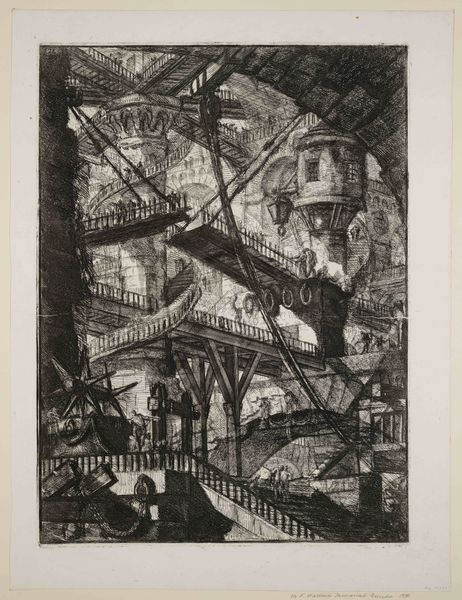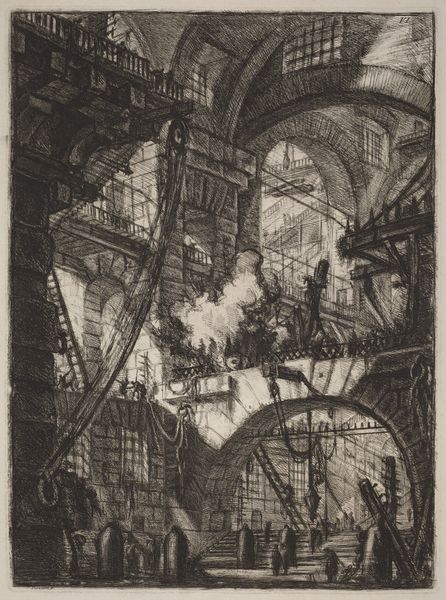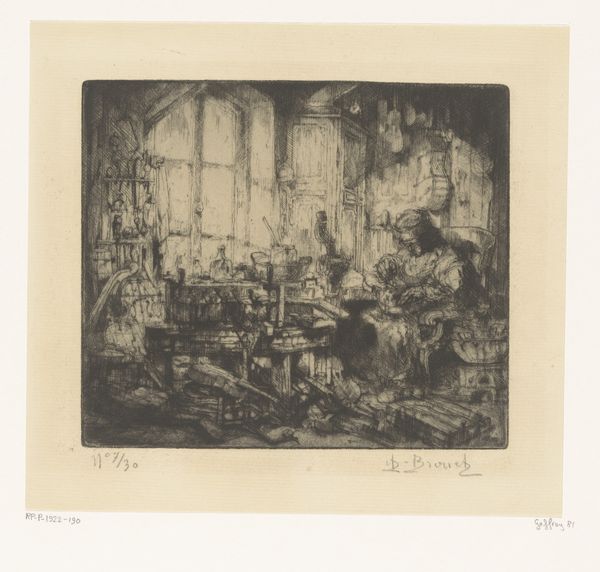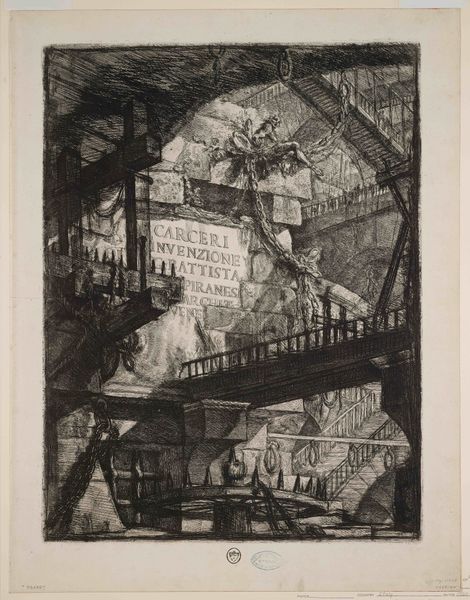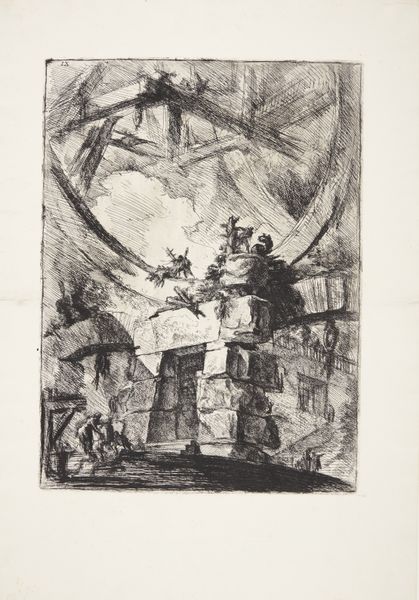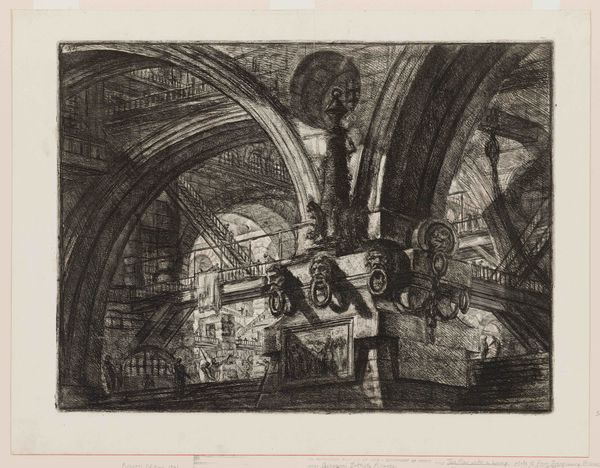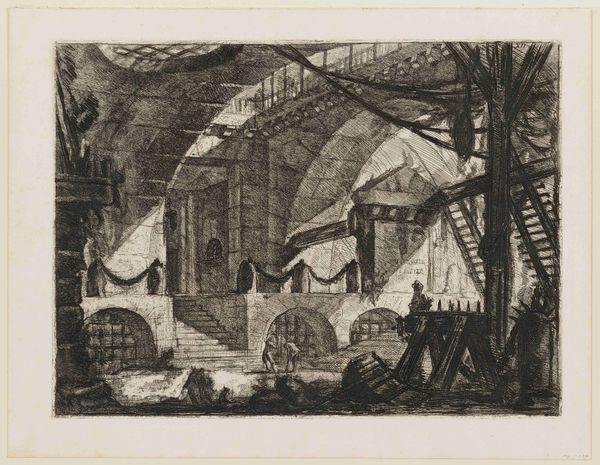
Prisoners on a projecting platform 1748 - 1749
0:00
0:00
print, etching, engraving
#
medieval
#
baroque
# print
#
etching
#
history-painting
#
italian-renaissance
#
engraving
Dimensions: 405 mm (height) x 538 mm (width) (plademaal)
Editor: This is Giovanni Battista Piranesi's "Prisoners on a Projecting Platform," created between 1748 and 1749. It's an etching and engraving. I’m immediately struck by its almost theatrical sense of depth and the overwhelming feeling of oppression. What do you see in this piece? Curator: I see layers of symbolic imprisonment. Not just physical, in the way the figures are positioned on the platform, but psychological, as reinforced by the cavernous architecture. Piranesi masterfully uses the language of architecture, the weight of stone, the dizzying perspectives, to evoke a state of mind. The very act of projecting implies something seen or judged – a public spectacle of suffering. Editor: The scale is confusing, too. I can't quite tell if those are regular-sized people in a huge space or tiny people in a normal space. Curator: Exactly. That disorientation speaks to the human condition itself. Consider the period: the Enlightenment, reason, and the birth of the modern prison. Are these simply prisoners, or does Piranesi suggest we are all prisoners of something - be it societal norms, our own minds, or the inexorable march of time? What recurring visual motifs do you observe? Editor: Well, I see arches, stairs, and platforms repeated… leading nowhere obvious. A continuous cycle of architectural forms. Curator: Yes. Those arches evoke Roman grandeur, twisted and subverted. Stairs usually symbolize ascension, but here they suggest futility, a rat race to nowhere. The platforms… they become stages for human drama. The emotional impact accumulates through the symbolic grammar he has built. The history of architecture echoes and amplifies individual emotions. Editor: So it's like the architecture itself is a metaphor for the prisoners' state of mind? Curator: Precisely. Piranesi isn't simply depicting a prison. He is exploring the architecture of confinement on a psychological and symbolic level, turning cultural memory into a deeply affecting scene. Editor: This makes me see the work as more than just a historical depiction of a prison. I’m beginning to grasp its powerful and enduring cultural meaning. Curator: Indeed, and hopefully inspires further examination into how artists communicate with us.
Comments
No comments
Be the first to comment and join the conversation on the ultimate creative platform.
